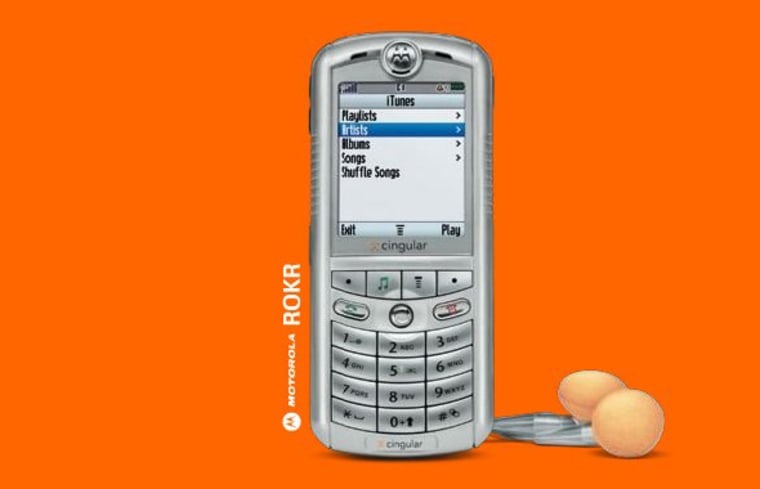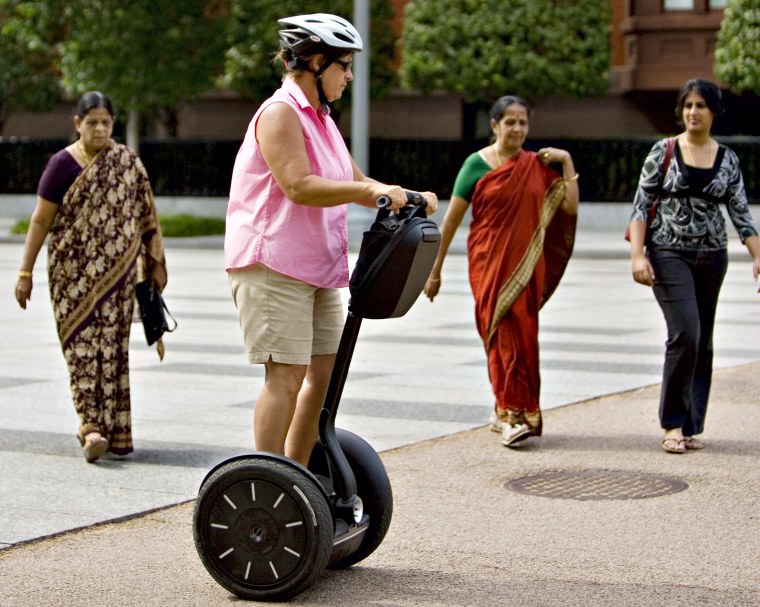There are gadgets that change everything (the iPhone, the first Intel Centrino laptops, Bose’s noise-canceling headphones), and then there are devices that are so spectacularly bad that they should be immortalized in their own way. The last few decades have seen all kinds of flops, from a not-so-world-changing scooter to Nokia’s attempt to beat Nintendo and Sony at their own game.
More recently, we’ve seen a smartphone that’s likely the fastest to go from $99 to 99 cents (the HTC First) and a Death Star-like media player that doesn’t do much other than look menacing. To make our list of all-time gadget flops, the product had to do more than fail to execute. It had to have serious hype behind it—enough to help make that crash and burn all the more satisfying. Here are some of our Worst Gadget Flops of All Time:
Google Nexus Q (2012)
Google has had decidedly mixed results with hardware, but the Nexus Q was an unmitigated disaster. Despite its Death Star-chic design, this gadget was an overpriced $299 orb that attempted to make media consumption more social.
You and your friends could create a queue of tracks and/or YouTube clips and stream them from your phone or tablet. Inexplicably, though, the Nexus Q couldn't access anything other than Google's content, making the Roku look like the deal of the century. There are rumors that a Nexus Q2 is on the way, but it had better be an entirely different beast.
More: 10 Worst Tech Rip-Offs and How to Avoid Them
Samsung Q1 (2006)
Known as a part of the buzzed-about Project Oragami before it hit the market, Samsung Q1 was an Ultra-Mobile PC that weighed 1.7 pounds and ran full Windows on a 7-inch (800 x 480) touchscreen. Price? $1,099.
That's too much for a device whose software wasn't touch friendly and whose battery lasted a sad 3 hours on a charge. Today Samsung is the No. 2 seller of tablets behind Apple, but the Q1 should get none of the credit.
More: The 15 most overpriced gadgets of all time
BlackBerry Storm (2008)
Do you wish your touchscreen felt like it was collapsing every time you tried to respond to an email? That was the magic of SureType, an ironically named feature that made the BlackBerry Storm one of the most hated smartphones ever.
A lack of Wi-Fi, glitchy software and sluggish performance solidified the Storm as a unnatural disaster. RIM's Storm 2 would improve on the original in every way, but how could it not?
More: 14 essential BlackBerry 10 tips
Nokia N-Gage (2003)
Once upon a time Nokia believed it could compete in the handheld gaming market, and that delusion manifested itself in the form of the N-Gage. This combination phone and mobile console was so awkward it was funny—assuming you didn't fork over $299 to get one.
For starters, the N-Gage forced users to hold it up their heads sideways to talk, which make people look like they were holding a taco up to their ears. Gamers also needed to remove the back cover and battery to swap games. Nokia would release a mobile mea culpa sequel in the N-Gage 2, but it was too little, too late.
More: Failure to Launch: 5 most embarrassing tech events
MSN Direct Smart Watches (2004)
Literally and figuratively, MSN Direct Smart Watches were ahead of their time. Made by the likes of Fossil and Swatch, these bulky wrist-worn monstrosities fetched stock quotes, news, sports, and weather via FM radio waves for $9.99 per month. Unfortunately for Microsoft and its partners, smartphones already did the above and much more. The hardware would fade from the market by 2008, but Microsoft only recently shut down the network.
More: Top 5 smart watches to watch
Oakley Thump sunglasses (2007)
Before there was Google Glass there was Oakley's Thump sunglasses, which combined shades with an MP3 player. Too bad the glasses were ugly and the audio controls were difficult to use. Plus, users were stuck with a measly 256MB of flash memory at a sky-high $495 price tag. Shockingly, a celebrity endorsement from Dog the Bounty Hunter failed to move the needle.
More: What were they thinking? 6 most senseless gadgets
Microsoft Zune (2006)
Hoping to make a dent in the iPod’s mammoth market share, the original Zune got some people so excited that one man decided to have the Zune logo tattooed on his arm. Too bad he didn’t have anyone to share his music with. The Zune-to-Zune sharing feature (which worked over Wi-Fi) fell flat because you could only play tracks you acquired three times within three days. You also had to be near the other unfortunate Zune owner. A lack of a video store at launch further hurt the Zune’s cause. A more polished design in the Zune HD and a half-baked gaming strategy couldn’t save this franchise, but elements of its slick UI live on in Windows Phone.
Twitter Peek (2009)
Not all single-purpose devices are bad, but this was the worst. The Twitter Peek allowed Twitter fans to check their feed and post updates using a built-in keyboard. While cute, the device showed only 20-character previews of your Tweets, forcing you to click to see more. And the built-in browser was buggy. It didn't matter that you had a choice of payment plans (free service if you paid $199 up front or $7.99 monthly if you spent $99). There were plenty of free apps for cheaper smartphones that did the same thing. Perhaps the Fail Whale should have been printed on the box.
More: 3 tips to keep your privacy on Twitter
Sharp RD3D (2003)
It's probably not a coincidence that Sharp exited the laptop market in the U.S. not long after the RD3D bombed. For a gulp-inducing $3,300, this 15-inch notebook was the first to display 3-D content without the aid of glasses.
Even if you were willing to put up with the eye strain, the RD3D's sluggish performance with 3-D enabled, and with laughably narrow viewing angles, made this laptop fall flat on its face. Other companies would try to pick up where Sharp left off, including Nvidia and Toshiba, but they failed, too.
More: Laptop buying guide 2013: 8 essential tips
Sony Tablet P (2012)

Sometimes two isn't better than one. Exhibit A is the Sony Tablet P, which sported dual 5.5-inch displays that you could use either laid flat or clamshell style. While small enough for jacket pocket, the P was way too big for your jeans and it cost a fairly steep $549 (or $399 with a two-year contract).
And even though some of the apps stretched across both screen, you couldn't run two separate apps simultaneously like today's Galaxy S4. Worst of all, the P was instantly dated because it didn't support AT&T's LTE network. It was HSPA only. Why bother?
Motorola ROKR E1 (2005)

Before Apple dove into the smartphone market it dipped a toe in the water by partnering with Motorola for the ROKR E1 ($249), dubbed the first "iTunes phone."
The ROKR wasn't even a one-hit wonder. Thanks to its lame 100-song capacity and the inability to download tracks over the Web, consumers immediately tuned this handset out. No one wanted a gimped companion device for their iPod that could make calls; they wanted it all in one device. And Apple would give it to them two years later.
More: Top 10 iPhone alternatives
Segway (2001)

Other than the original iPhone, very few gadgets in history were hyped this much before launch. Dean Kamen's Project Ginger had all sorts of praise heaped upon it by those who previewed the new-age scooter. Here's what Steve Jobs reportedly said about the Segway in a book proposal: “If enough people see the machine you won’t have to convince them to architect cities around it. It’ll just happen.” Oops.
Priced at a staggering $5,000, the Segway didn't even come close to living up to its expectations. Sure, it was nifty that the Segway was self-balancing, but that wasn't nearly enough to overcome the sticker shock or the sheer geek factor of this vehicle. The final insult came when President Bush fell off a Segway in 2004. Today, you'll see these scooters ridden by some police officers and postal workers, but that's pretty much it.
More: 8 tech products that won’t make it to 2014
You can read LAPTOP's full list of worst gadgets here.
Copyright 2013 LAPTOP, a TechMediaNetwork company. All rights reserved. This material may not be published, broadcast, rewritten or redistributed.